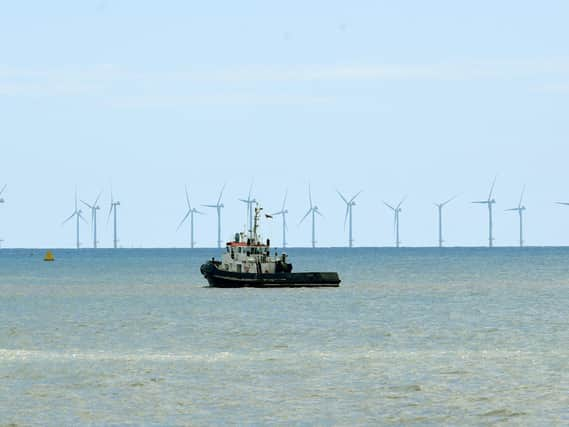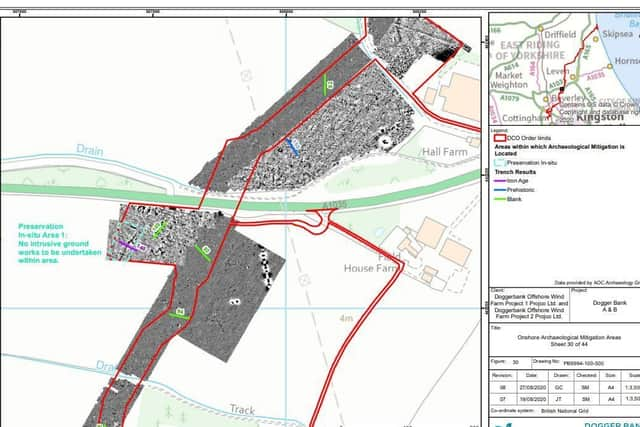Dig for ancient remains on cable route from Britain's biggest wind farm


Archaeologists have been carrying out excavations at three sites in Holderness, along the route of the cable, while others are being recorded.
Geophysical surveys carried out in two stages, followed up by 156 trial trenches uncovered Iron Age and Romano-British activity near a number of villages, including Ulrome, where the cable makes landfall, Beeford, Burshill, Routh, Leven and Tickton.
Advertisement
Hide AdAdvertisement
Hide AdThe Iron Age refers to the period of human history when the use of iron became widespread and dates from around 800BC to AD43 when the Romans invaded.


According to documents submitted to East Riding Council, "archaeological mitigation" works have been taking place since April, ahead of “intrusive” construction work at each of the sites.
“Set piece" excavations were due to take place at the three sites selected for having the highest archaeological potential.
They include a “large circular feature” at Ulrome, where a trial trench later revealed a large hollow full of dumped material, including burnt stone and clay, with Iron Age or Romano-British pottery on top.
Advertisement
Hide AdAdvertisement
Hide AdNear Beeford, five miles away, a geophysical survey picked up possible enclosures, ring ditches, trackways, field systems and boundaries. Animal bone and worked flint, including a possible scraper, were retrieved from two ditches, suggesting a possible prehistoric date.
In a third area, also at Beeford, finds from a number of trenches “suggest a focus of Iron Age or Romano-British occupation activity”. As well as a large quantity of Romano-British pottery, a possible fire pit or hearth was also found.
In another 11 areas a “strip, map and record” approach was to be taken, including at three sites which were originally scheduled for preservation.
The cable will transport power generated by Creyke Beck A, one of two massive offshore windfarms, being built by SSE Renewables and Equinor 80 miles offshore to two new convertor stations south of Beverley, before connecting into the National Grid at the Creyke Beck sub station near Cottingham.
Advertisement
Hide AdAdvertisement
Hide AdWork to install 20 miles of cables, which will be laid within ducts, started in January.
A Dogger Bank Wind Farm spokeswoman said: “Archaeological works began in the East Riding area in late 2018, as part of our ground preparation activities for the cable route for the world’s largest offshore wind farm.
We’re looking forward to sharing any exciting discoveries we unearth during this ongoing process with local residents and landowners.”
In recent years large infrastructure projects in the area have started filling in what was a blank archaeological map.
Advertisement
Hide AdAdvertisement
Hide AdExcavations a decade ago in south Holderness along the route of a gas pipeline from Easington to Ganstead uncovered a dozen Iron Age settlements as well as a Roman cemetery.
The earliest find was a Mesolithic flintworking site, near Sproatley, dating back some 7,000 years.
Comment Guidelines
National World encourages reader discussion on our stories. User feedback, insights and back-and-forth exchanges add a rich layer of context to reporting. Please review our Community Guidelines before commenting.